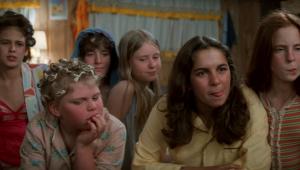Review: LG 50PZ950 3D Plasma HDTV Page 3
Performance
First impressions of the 50PZ950 were impressive: a detailed picture with punchy contrast and seemingly accurate colors. Its deep blacks allowed the letterbox bars of wide aspect ratio movies to blend with the background of my dark room.
Performance on the standard suite of video processing tests revealed no real surprises. The rotating bar pattern on the Spears&Munsil Blu-ray and HQV Benchmark DVD both looked excellent, with minimal jaggies. Real-world performance wasn’t quite as stellar, with some small jaggies showing on both the S&M disc’s HD Ship clip and the end of Chapter 12 from Gladiator. Scaling performance was excellent, though, with lots of detail pulled from DVD sources.
The Smart TV interface, as LG calls it, houses multiple streaming services, the most notable being the ubiquitous Netflix, plus Amazon Instant Video and Vudu. The Netflix interface is of the newer variety, with big, detailed cover art and, of course, a search function. The LG’s scaling up of standard-definition Netflix content is really good. To test this, I like using the opening scene of Star Trek (the 2009 reboot by J.J. Abrams). There’s a close-up of the captain’s face that’s a great tell. This shot had a lot of detail on the PZ950 and very little noise. The TV performed similarly with Amazon’s SD offerings. HD content on both revealed the quality typical of each service, as in decent but not great. As usual, Vudu looked a lot better. In short, performance was as good as you can get from the streaming services, and on par with the better-performing Internet-streaming Blu-ray players in this regard.
I ended up watching the entirety of Ridley Scott’s 1989 thriller, Black Rain, in HD via my AT&T U-Verse. Scott’s signature dramatic lighting and shadows were represented flawlessly. The PZ950’s color and contrast ratio added up to an extremely film-like experience.
To top off my time with the LG, I christened my shiny Blu-ray box of The Lord of the Rings: The Motion Picture Trilogy, Extended Edition. Detail in faces was excellent. The dark scenes in the Mines of Moria looked inky, while the torches simultaneously came across as sharp pinpricks of light. Try that with an LCD.
The LG’s 3D performance was less impressive. As I watched Avatar using LG’s lightweight active-shutter glasses ($129), there was a strong perception of depth but also some visible crosstalk. The image was fairly bright, though, so I’d classify 3D performance as decent. A flip-up nose bridge is some LG engineer’s idea of how to make 3D eyewear comfortable for people who wear prescription glasses. I don’t think said engineer wears glasses, or apparently knows anyone who does. The frames also buzzed quietly but noticeably,
The set’s 2D-to-3D conversion is poor. Using LOTR again, I found the excessive crosstalk to be an inadequate tradeoff for the marginal depth that was created. You can dial back the level of artificial depth, but once you get to the point where crosstalk isn’t an issue, there’s almost no depth.
The only odd characteristic I found was a sort of mild Fresnel lens effect when you’re extremely far off-axis or looking at the TV from above or below: The picture softens and is slightly less bright. It’s doubtful that you’d ever be in a position to see this, but I wanted to mention it so that LCD fanboys don’t think I’m plasma-biased. The effect is noticeable if you’re more than 80° off center — like at the very edge of the set. But if you’re sitting that far off to the side . . . why?
- Log in or register to post comments


















































